I’m excited to bring you this first VentureKit video on how to create a job description. I cover how to conduct a job analysis and write a role’s responsibilities, qualifications, compensation, logistics, title, and company summary.
Office Space and the Pied Piper logo make cameos. Below is the video’s transcript.
Transcript
This video is the first in a series about hiring, one of the areas founders most want help with. Founders regularly ask me if I know anyone who would fit their open roles, but then don’t have a job description, or have one that is way too vague. Hiring is fundamentally hard and it’s much harder when you’re not clear on what you want. That’s why I’m starting this hiring series about the job description.
I’ll outline the goals of a job description, then walk through seven steps:
I’ll include examples, checklists, pros and cons, and some advanced tips. Let’s dive in.
Goals of a Job Description
First, a job description outlines a role to potential candidates, but it also serves other goals. It’s a spec that defines what your team should hire for, just like a product spec defines what your team should build.
It helps determine the role’s title, compensation, and success metrics to measure performance. A good description also conveys what a more junior person should develop toward for promotion. A description helps protects the company if an employee claims that a task is not part of their role.
At its best, a job description is a recruiting tool that excites people to work for you. For many, it will be their first impression of your company. You want it to be a good one.
Run a Job Analysis
The first step of creating a job description is assessing what you need through a job analysis.
This may actually be the hardest step. At a startup, needs are constantly changing and people wear multiple hats. If you’re not familiar with an area like engineering or marketing, you may miss important subtleties.
A job analysis determines the responsibilities, qualifications, and conditions of a role. For the common roles in a startup, this doesn’t need to take a lot of time. You can ask your team questions like:
- What skills do we most need right now?
- What are you doing that should be done by a new hire?
- What are you feeling overwhelmed by?
If you’re hiring for a role that someone already fills, you can ask them to outline a day in their life.
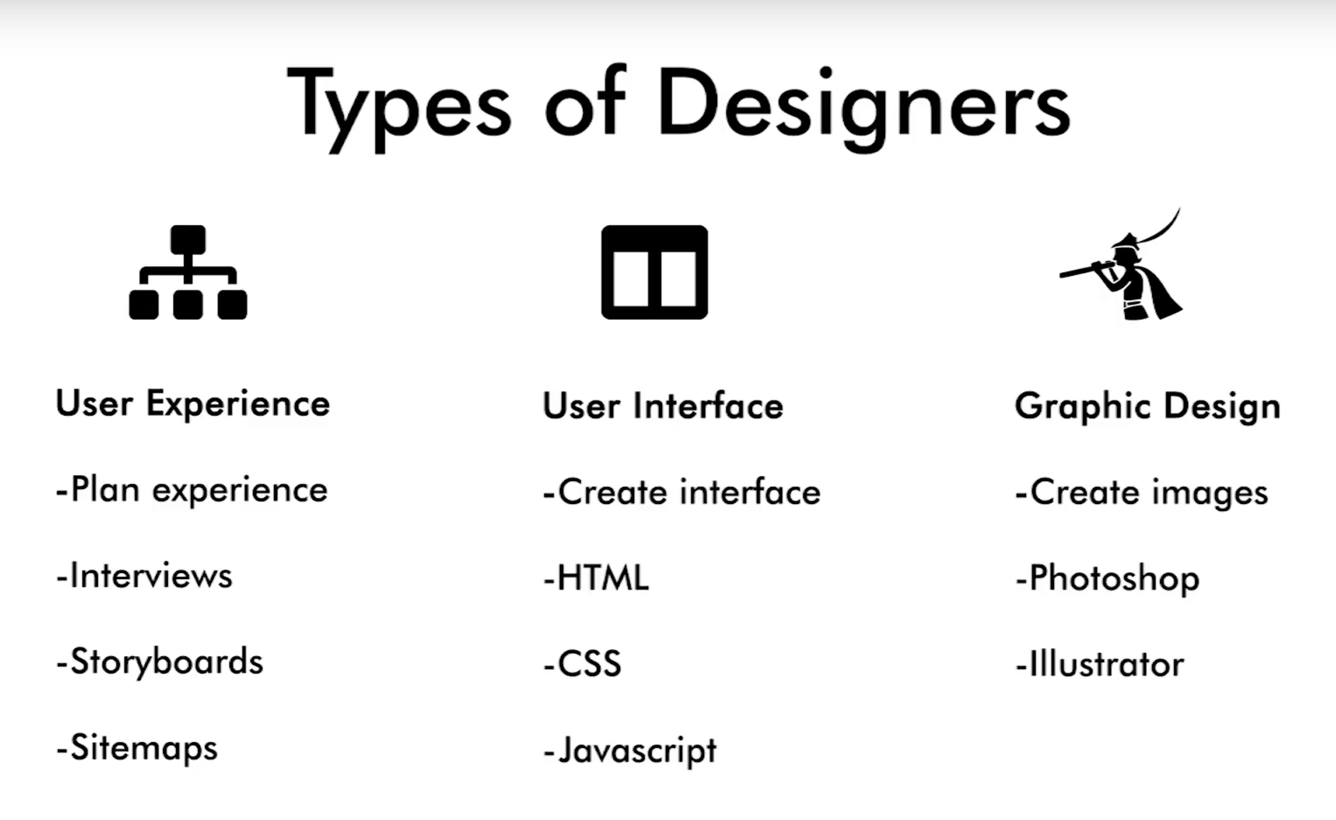
- User experience designers plan the entire experience of a product using interviews, storyboards, and sitemaps.
- User interface designers create the actual interface of an app using languages like HTML, CSS, and Javascript.
- Graphic designers create visual elements like logos and images using tools like Adobe Photoshop and Illustrator.
Every functional area has nuances like this. If you don’t know them, research what you actually need upfront or you’ll waste a lot of time.
Responsibilities
Next, write the job’s responsibilities. The most common format is list of action statements with a verb, an expected result, and sometimes the methods. For example, you may want a software engineer who can “code, test, and deploy features using Ruby on Rails”.
List the most important tasks first and aim to list 5-10 key duties. Do NOT copy and paste from a job template. It looks boring and lazy. List specific projects and tasks the hire will work on.
For example, Google posted a job description for a virtual reality software engineer. It lists tasks specific to the role, like developing VR plugins and games and supporting VR on mobile devices.
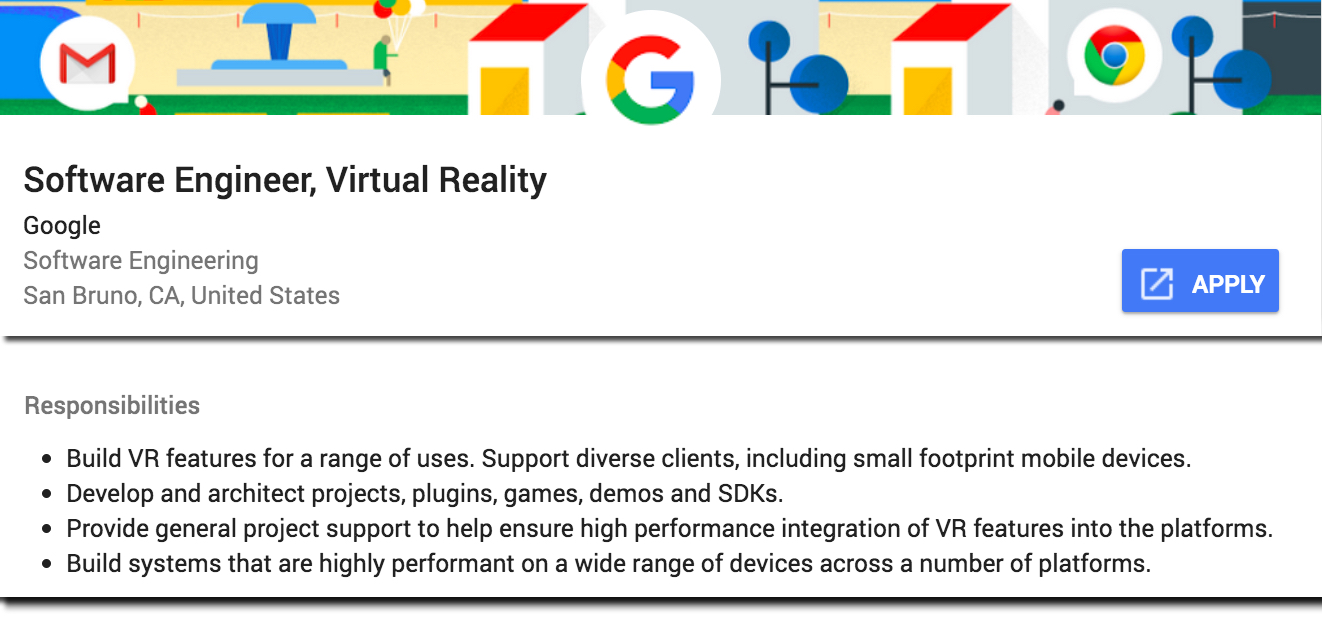
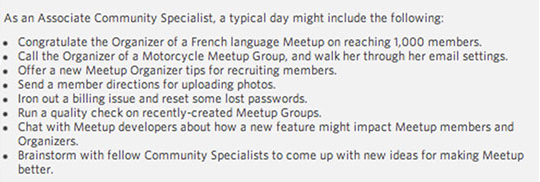
- Congratulate the organizer of a French language Meetup on reaching 1,000 members.
- Call the organizer of a motorcyle meetup about her email settings.
- Iron out a billing issue and reset some lost passwords.
Even if the tasks are mundane, illustrating the job like this brings it to life.
Also consider listing expected results that will mirror your performance reviews. An interface designer could be expected to reduce bounce rates and increase conversion rates. A salesperson could be expected to increase leads and revenue. You don’t need to list exact numbers, but you do want candidates to know how you measure success.
Kin posted a description with their expectations of an outbound sales agent in the first few months. They expect the candidate to learn the company inside-out in month 1, to generate prospect lists in month 2, and to start closing 15-20 accounts in month 3. I love the clarity of this and how it will excite the right candidates.
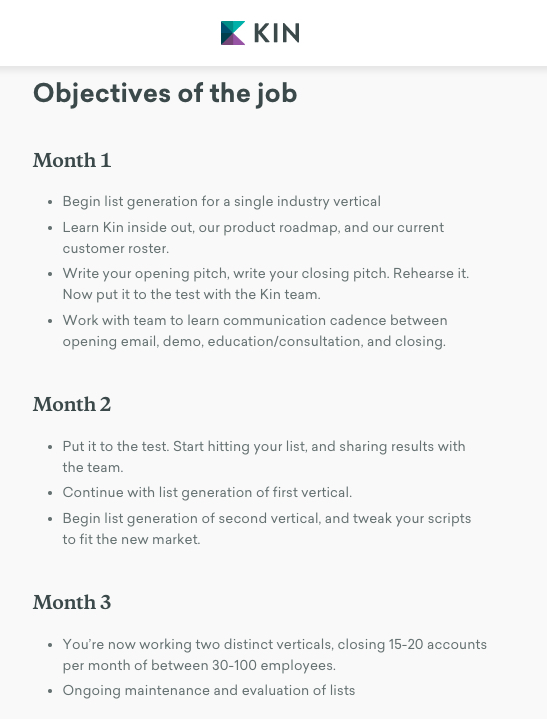
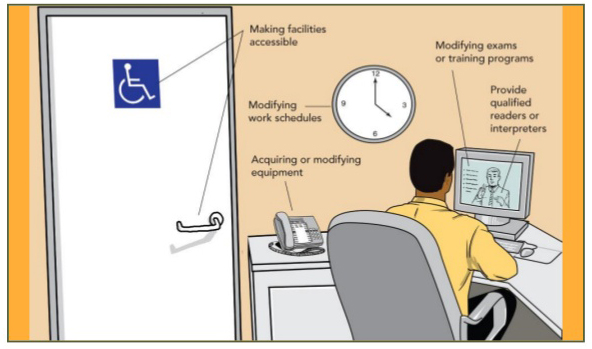
Qualifications
Next, define what qualifications you want in a candidate. You can segment these into three categories:
- Knowledge, like an understanding of computer science principles
- Skills, like the ability to write code in C++
- Traits, like strong enthusiasm or a sense of humor
Try to limit to 5-10 key qualifications so you don’t overwhelm candidates. Distinguish between qualifications that are must-have vs. nice to have. Again, don’t copy and paste from a template. Add details and personality consistent with your company branding.
For example, on Github’s job description for a tech support agent – who they call Supportocats – their requirements section says:
“You are good at logic and solving puzzles, advocating and empathizing, the English language, and working remotely.”
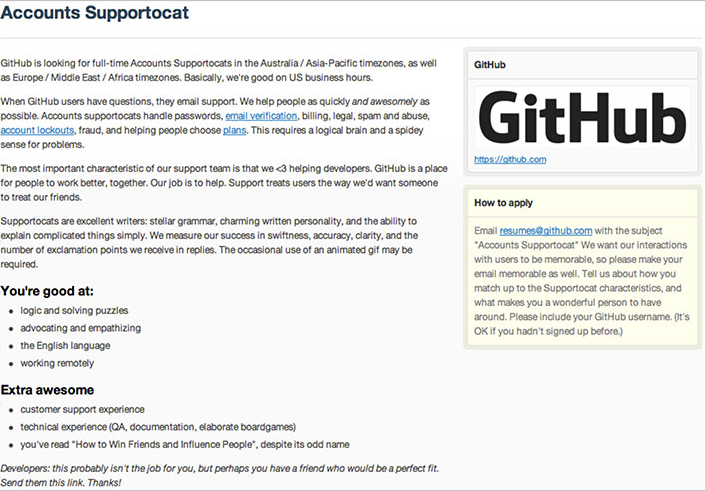
Some things to avoid:
- Avoid cliches. Don’t say you want a ninja, a rockstar, or someone who thinks outside the box. These terms are overused and sound cheesy.
- Avoid requiring a certain GPA or pedigree. These usually aren’t predictive and can turn off non-traditional but qualified candidates. Google used to ask for college transcripts but stopped after an internal analysis found they weren’t meaningful.
- Avoid discriminatory terms, such as “salesman”, “able-bodied”, or “young”. These can turn off qualified candidates and land you in legal trouble.
- I also prefer to avoid requiring specific years of experience unless the number is well-informed. These are often wild guesses and can exclude high-performing fast learners. Focus on what a candidate should have provenly done.
For example, instead of requiring that a Design Director have 8 years of design experience, consider requiring that the candidate has led multiple design teams to produce successful products.
A common question is: should I describe my perfect candidate or a realistic one?
My answer is to describe your ideal candidate given limitations like compensation and scarcity of the skills you need. If you’re paying top-of-market for an office manager, you can be picky. If you’re paying below market for AI talent, be prepared to train a fast learner. Distinguishing between must-haves and nice to haves will help you prioritize.
Compensation
Next, describe the role’s compensation package. That includes salary, equity, commissions, health insurance, 401(k), paid time off, disability and life insurance, training, relocation, perks, and anything else you offer employees.
To determine what you should pay, there are two main sources of free compensation data for startups.
The first is compensation search engines, especially AngelList, which let you find salary and equity numbers of real jobs by role, location, and market. Other sites like PayScale, Glassdoor, and Salary.com are useful, but their data skews toward large companies with higher cash and lower equity packages
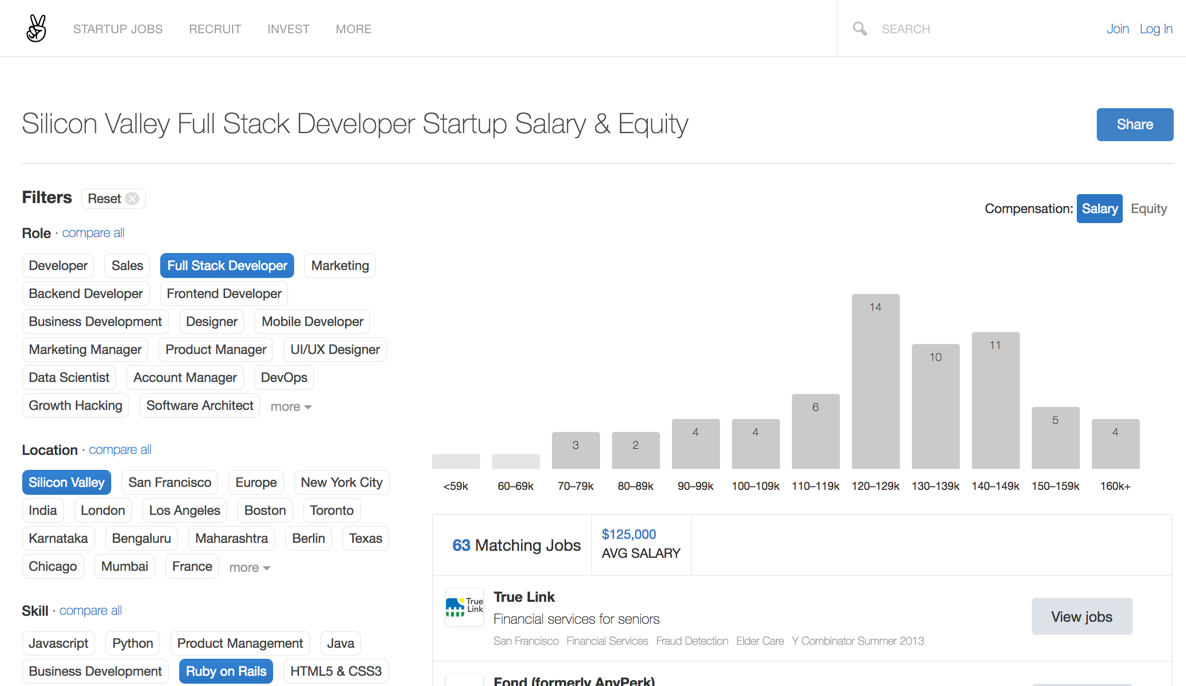
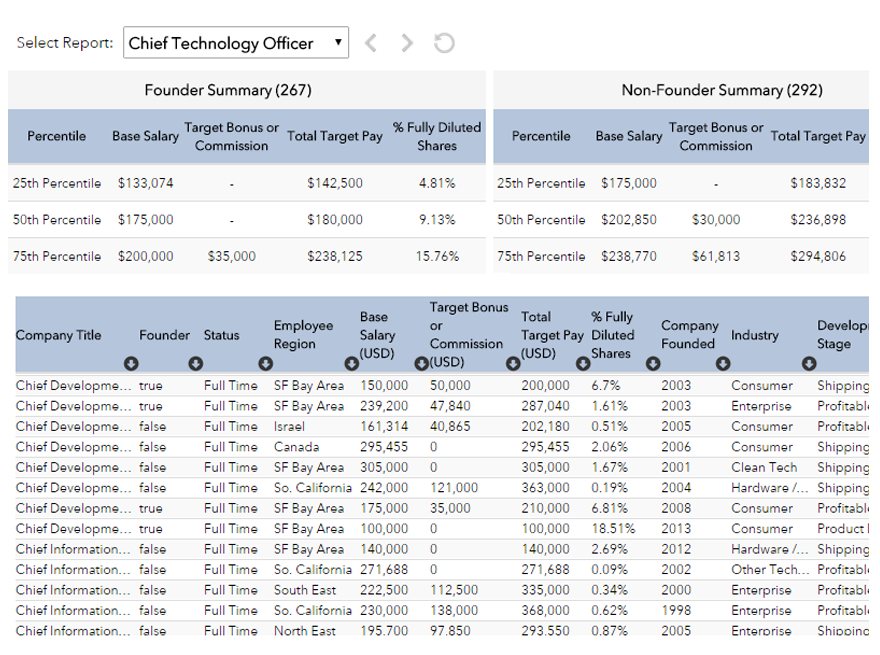
- It eliminates candidates who require higher comp, saving time for you and them.
- It signals a transparent culture where people will have access to information that matters to them.
- It can increase the number of applications. I found multiple studies that reported between 30% to 60% more applications when salary numbers were reported, for both low- and high-paid jobs.
- It can reduce racial and gender pay gaps that upset employees and invite lawsuits.
However, here are cons:
- It can upset current employees who are not paid as highly.
- It can be easier for competitors to poach your talent by paying more.
- It can be harder to negotiate compensation downward for a less proven candidate.
- It can lead to public shaming if you are paying significantly below market.
Overall, a few tech companies like Stack Overflow and Buffer are transparent on their compensation formula, and AngelList has thousands of job postings with salary and equity ranges, but most companies keep these numbers private. If you want to follow the norm or aren’t ready to make pay internally transparent, don’t list it on a job description. If your compensation is “competitive”, “market-rate”, or “generous”, you can say so, but don’t mislead candidates. They increasingly post on employer review sites like Glassdoor and a poor reputation will hurt. If you are willing to take a bolder approach, list salary and equity on the job description, at least as a range. If you’re paying market-rate, you’ll likely attract more and higher-quality candidates. However, create process that regularly updates comp to market rates, have a thoughtful promotion policy, and expect a few awkward conversations. I like the culture and discipline that transparency creates, but it takes work.
Logistics
Next, describe the role’s logistics. That includes:
- Who the hire will report to
- An expected start date
- Whether the role is full-time, part-time, flex-time, or temporary
- Whether it’s remote or on-location
- Whether the role is exempt or non-exempt
Exempt vs. non-exempt roles are defined by the Fair Labor Standards Act, the FLSA. Exempt roles are exempt from minimum wage, overtime regulations, and other FLSA protections. Exempt roles are usually salaried jobs that pay at least $23,600 as of 2018 and perform professional services. Non-exempt roles are usually hourly jobs where an overtime of 1.5 times must be paid for more than 40 hours of work. These are more often manual or repetitive tasks. Most roles in startups are exempt but check with an HR expert to make sure you’re following FLSA regulations. The most important logistic is telling candidates how to apply. You can direct candidates to an online form, an email address, or a screening test. Ask upfront for any documents that you’ll need like a resume or design portfolio. Also put the online call to action on the top of the page if you can. Don’t make people hunt for how to reach you.
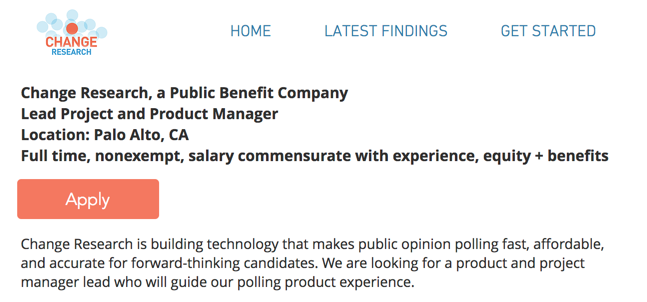
Title
After you’ve defined a role’s responsibilities, qualifications, compensation, and logistics, you can write the title.
I know this sounds backward, but a title summarizes an entire job in a few words. Unless you are crystal clear on that role from the beginning, I recommend building the role bottom-up as I’ve described.
You may start a search thinking you need a marketing manager, but realize you need a content manager. You may start thinking you need a manual QA tester, only to realize you actually want a QA engineer. You may learn you want less or more seniority, or even more than one role. By writing the title last, you can make it more accurate.
And an accurate title matters. It is usually the first impression of your job description, which again is usually the first impression of your company.
Some other tips on title:
- Keep it to 4 words or less. I like the saying that the most important titles are short, like god, dad, and wife. A long title can be pretentious or may mean the role is too large.

- Avoid abbreviations and acronyms, like “Sr” for “Senior” or “CPA” for an accountant. They can be unclear and may not match what people search for in job sites.
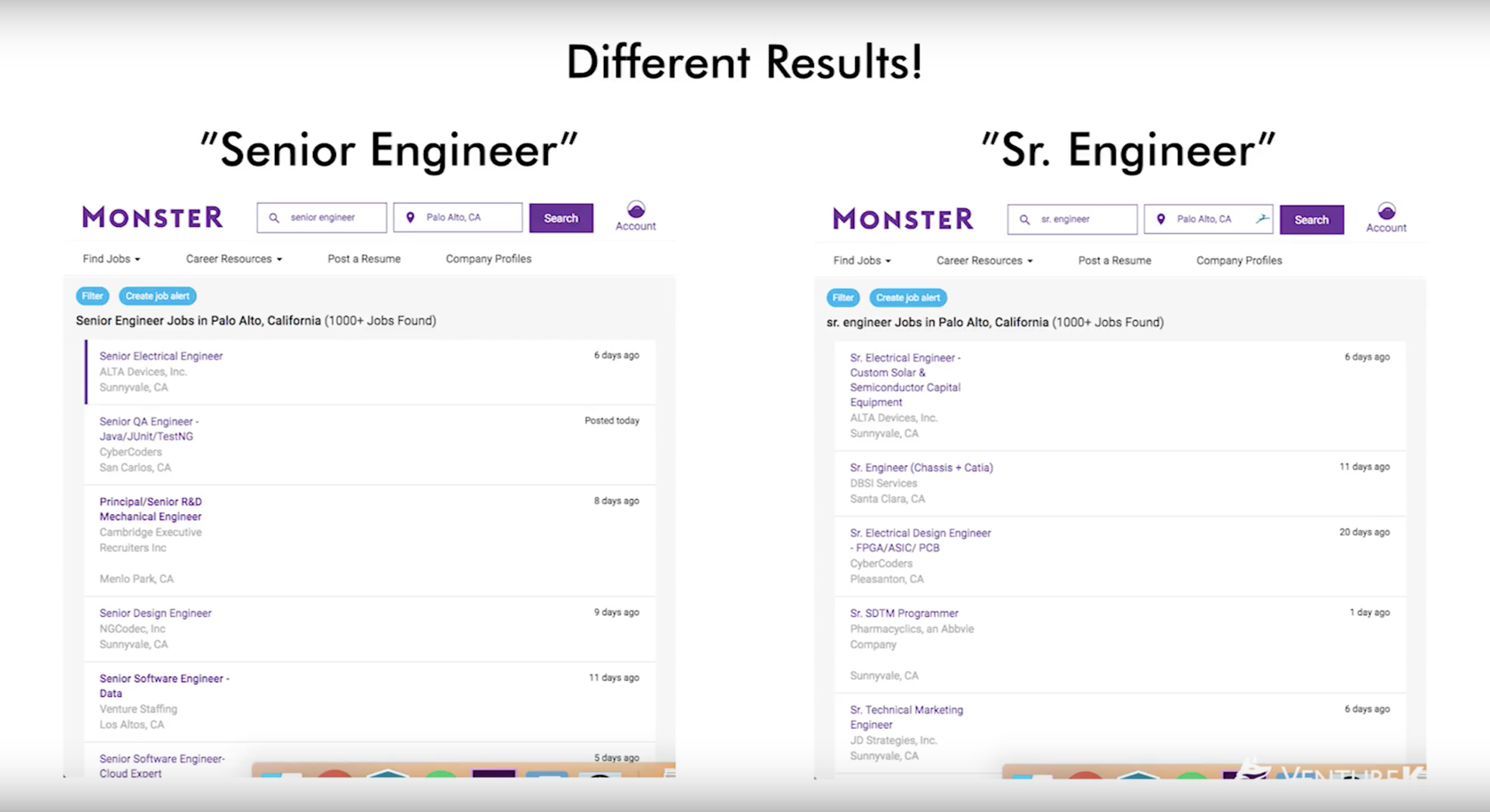
- Use cute titles with caution. Titles like “Money Maestro” and “Happiness Agent” can work if they’re clever and consistent with your branding, but more often come off as cheesy or unclear.
For example, “Growth Hacker” was in fashion for a while but can create confusion on how much of the role is engineering, product, or marketing. People have to put their title on a resume and tell it to others regularly. Even creative people usually want their title to be clear.
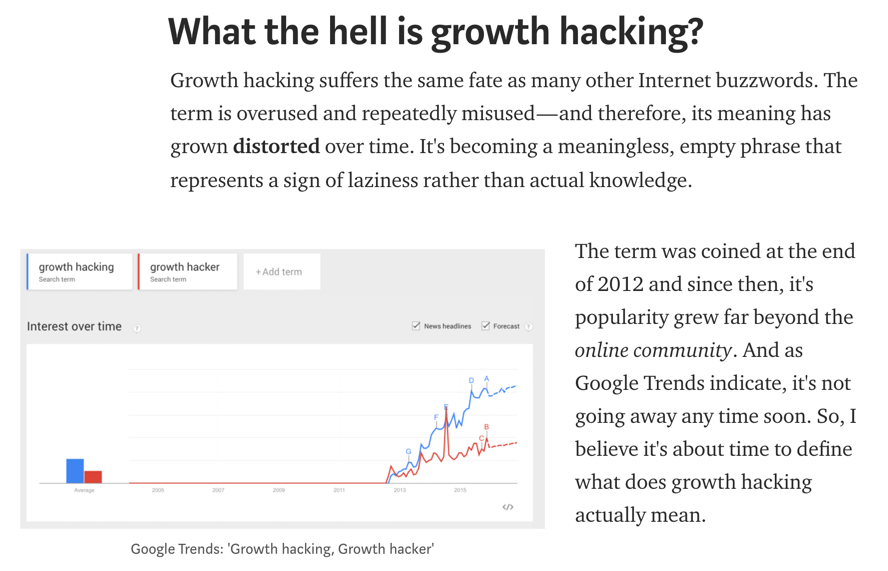
Company Summary
Finally, describe what your company does and why candidates should be excited about you. This is where you can most differentiate. A good company summary is like a good fundraising pitch: clear, concise, unique, and reflective of the company’s values and branding. I like summaries that are both descriptive and aspirational, that describe what you do and what you want to be. Netflix has the one of the best company descriptions I’ve seen. This is its opening: “Entertainment, like friendship, is a fundamental human need; it changes how we feel and gives us common ground. Netflix is better entertainment at lower cost and greater scale than the world has ever seen. We want to entertain everyone, and make the world smile.”
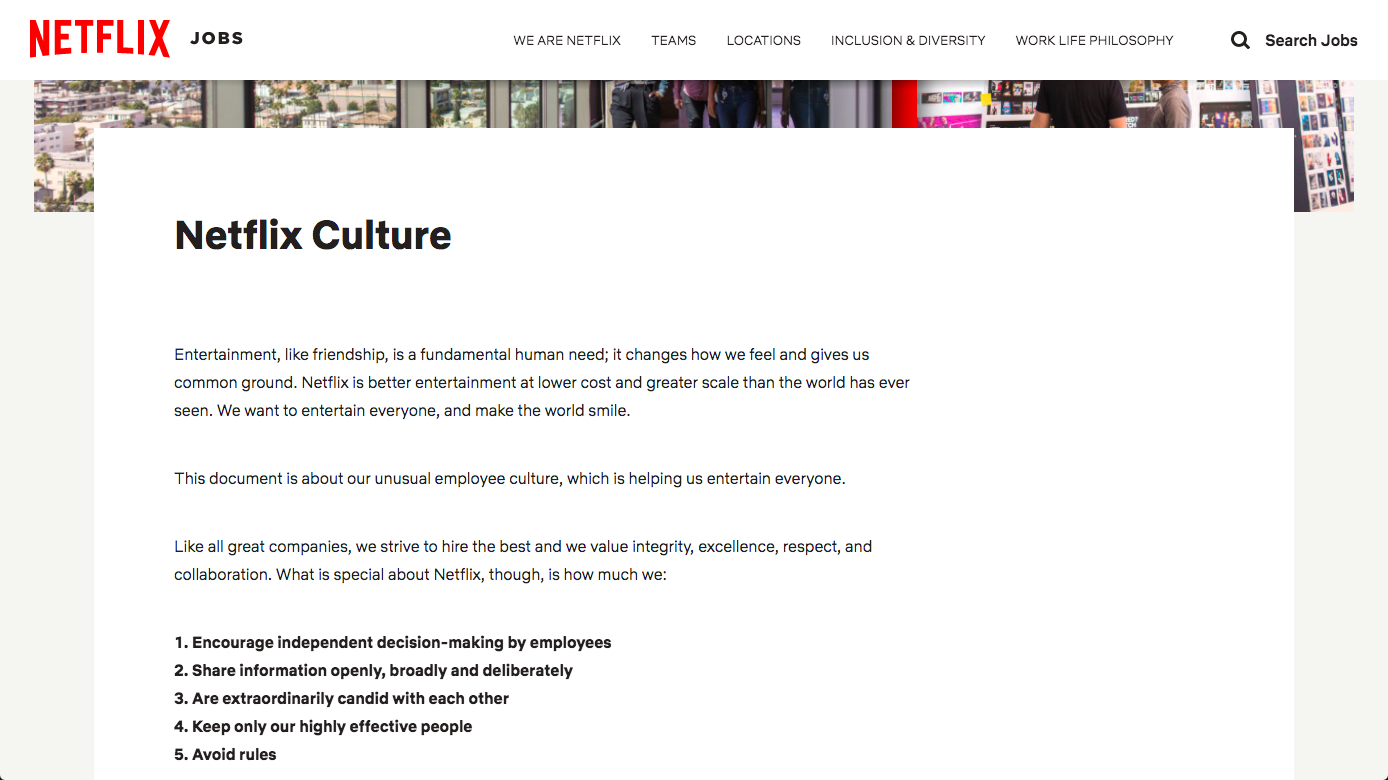
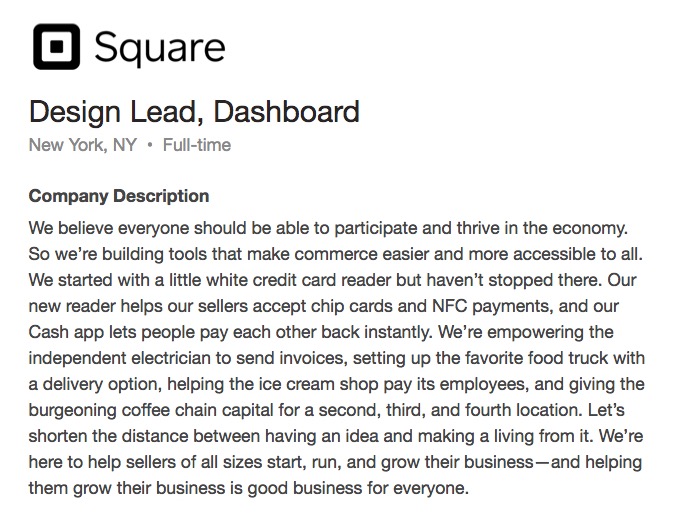
“We believe everyone should be able to participate and thrive in the economy. So we’re building tools that make commerce easier and more accessible to all. We’re here to help sellers of all sizes start, run, and grow their business—and helping them grow their business is good business for everyone.” In Breakthrough, my online therapy startup, I used to say that for many of our users, we were helping them with the most important problem in their lives. The more you can communicate about why your work matters, the more people will want to do it. Ok, those are seven steps to creating a good job description. Once it’s created, you can optimize it in a few ways:
- Use keywords throughout that a candidate would search for, like the job title and skills. This will help your description rank in Google and job site search engines.
- Consider addressing candidates in the second person. For example, the requirements section could say, “You have created several successful marketing campaigns”, instead of “The ideal candidate will have created…”. Addressing candidates directly feels more personal.
- Collect internal feedback on the description, especially from the hiring team. Make sure they are bought into the role responsibilities and qualifications.
- Add a referral bonus paid to anyone who sends you a hired candidate. You can make the referral bonuses public so even strangers are incentivized to help you, though you’ll get more unqualified applicants, so you can also just make the bonus available internally. Bonuses are usually a few percentage points of the hire’s salary.
- Finally, try to update the job description annually, for the same reason product specs should be updated as features change. Accurate job descriptions help with performance reviews, legal compliance, and future hiring.
